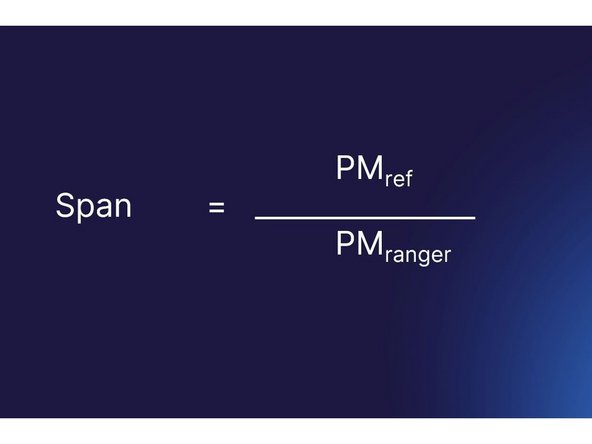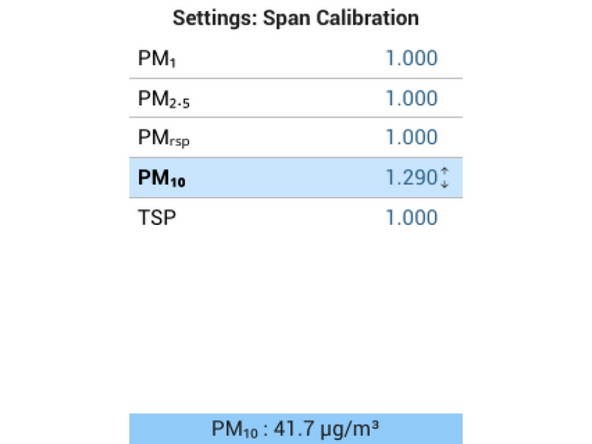Introduction
Professionals may choose to apply a Span value for a specific project, area, and/or aerosol, using gravimetric analysis as their source of input.
This method may be used to increase the degree of accuracy of Ranger|Dust's concentration readings.
This is because the manufacturer calibrates these instruments using ISO 12103 Test Dust. Aerosols encountered in the field--having different optical properties from the Test Dust--will all give different readings.
Tools
Parts
No parts specified.
Video Overview
How to apply a custom calibration to Ranger | Dust
-
-
Attach a PMX sensor head to Ranger and turn it on
-
Enter the Settings menu by pressing and holding the LEFT ARROW
-
Select the Calibrate submenu
-
Select the Span Calibration menu
-
Verify that the Span is set to 1.000 for all channels.
-
-
-
Aeroqual recommends the use of a gravimetric sampling setup as your reference
-
Simultaneously begin and end the sampling periods of both Ranger|Dust and your chosen reference
-
-
-
Once your co-location sampling is completed, calculate the average mass concentration of your reference. This becomes PMref
-
Next, calculate the average mass concentration of Ranger|Dust. This becomes PMranger
-
-
-
Calculate the ratio of the PMref over PMranger. This becomes your Span
-
-
-
Enter Settings and navigate to Calibrate>Span Calibration
-
On the relevant channel, adjust the Span as the Span from the previous step
-
Exit the Settings menu by pressing and holding the LEFT ARROW
-
If you have applied a Span to some channels, but not others, you may notice the concentration readings for a smaller fraction channel exceeds the concentration readings of a larger fraction channel. For example, PM2.5 > TSP.
-
-
-
If you remove the PMX sensor head from any Ranger base, and attach it to a different Ranger base, the Span will be retained
-
Your PMX sensor head will now give readings that account for a specific project, area, or aerosol.
Your PMX sensor head will now give readings that account for a specific project, area, or aerosol.







